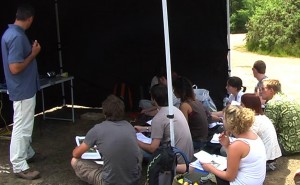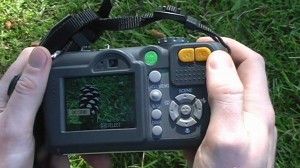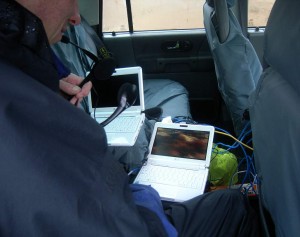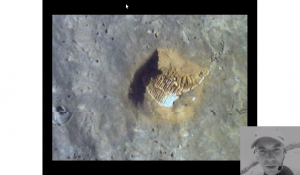At the end of June, we conducted some experiments to evaluate the performance of ERA-assisted fieldwork compared to the same fieldwork task being performed by students visiting the site directly. Four groups of students volunteers visited Devon Great Consols to perform an Environmental Impact Assessment (EIA) task related to a fictional plan to exploit metals available in the waste heaps on the site, left over from its time as an arsenic extraction plant in the late 19th and early 20th centuries.
Tag Archives: era
ERA introduction video
ERA visits Plymouth to demonstrate at GEES
On Monday 29th March (2010) we (John and Trevor) visited the Higher Education Academy’s Geography, Earth and Environmental Sciences Subject Centre based at the University of Plymouth. We met with John Maskall and Jason Truscott, and showed them the portable wireless network toolkit we’ve been developing in ERA.
Here is a video clip and some photos from the demo we did at the Devon Great Consols Mine.
Using smartphones as …phones.
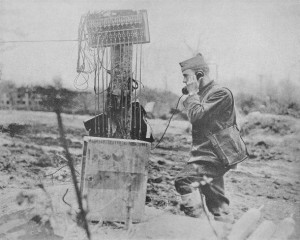
An early outdoor phone exchange
Could it be that the way to make a telephone call on a geology site would be to use a telephone? Now we seem to have some fairly stable WiFi networking hardware, and are considering that we might ditch the awkward netbooks for our ‘Sherpas’ in the field, perhaps we could use WiFi equipped smartphones for some of our outdoor networking needs?
Since we’re using SIP, we’ll need SIP software for any mobile phones we use, and there are obvious commercial reasons why most mobile service providers aren’t keen on this, but on the up side, bluetooth headsets are designed to be used with mobile phones so this could add another useful feature to the ERA toolkit.
Investigating video upgrades
During our field trials, it became clear that the built-in video camera on the Asus EEE 901 (and 701) is in the wrong place for our needs.
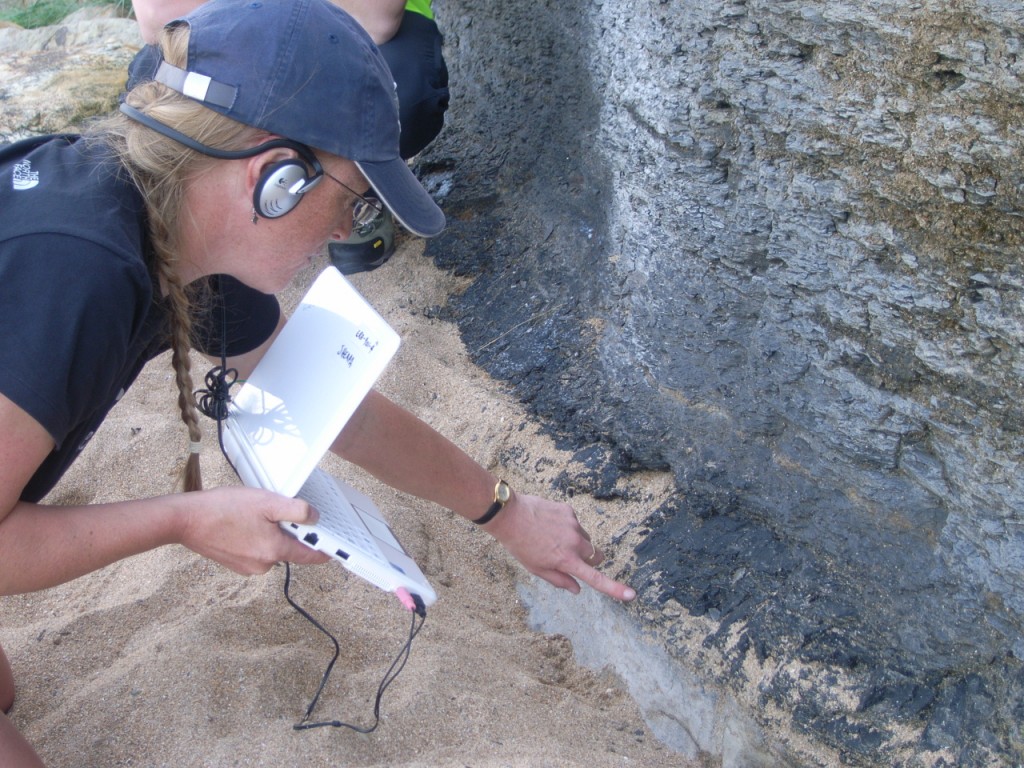
Using the Asus Eee PC 701's built in camera to capture geological features. The camera is built in to the top of the screen and is clearly designed for 'video diaries' or online video conferencing rather than capturing views of the landscape.
The 901 camera itself is a pretty good (for a plastic lens webcam) 1.3 megapixel device that’s supported in Ubuntu, but it faces the user, and we want it to face the rest of the world. Additionally, we found when using an external USB webcam, that being able to hold a smaller separate device or mount it on a helmet, rather than trying to point a whole netbook, was both easier and safer when clambering about on the rocks. From our experience and listening to the field geologists, we came up with a wish list of properties for a new video camera… Continue reading
Googlemaps links
Some annotated maps of our adventures on the North East coast :
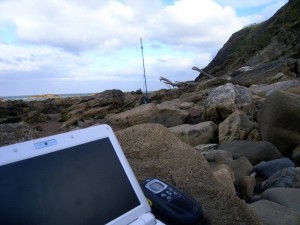
ERA kit on the beach at Scremerston
Seaton Sluice – visited on 01/08/09
Hartley Bay – visited on 01/08/09
Scremerston – visited on 04/08/09
Saltwick Bay – visited on 05/08/09
Howick – Rumbling Kern and Howick Haven, visited on 07/08/09.
Durham field tests
The ERA team has just returned from a week-long field trip in the North East of England, based at Durham University. We did tests at locations related to OU Geology module SXR369 along the Northumberland coastline. We trialled new (to us) VoIP services including 2-way video with a view to assisting students with limited mobility to experience geological fieldwork alongside their more mobile peers. Expect to see some news and test results here in the next few days.
Clifftop multi-hop: Scremerston
Today’s visit brought us to the dramatic coastal features of Scremerston, just south of Berwick-upon-Tweed. This is a tough location for Assisted Requirements students as the high, steep cliff face can be quite challenging to negotiate for anyone. The closest practical access is down a gravelled lane (which could be driven up at a push), stopping before the gate to a muddy field full of cows. From there, the beach site (which should be visited on a falling tide) is accessed down a grassy cliff face 300m or so from the gate. From the beach access, the geological study site is quite stretched out along the sea front, with features jutting out from the cliff base into the sea.
Fieldwork meeting with Professor Bob Spicer
I met with Bob Spicer an OU lecturer who we will be workiung with when we go to our Durham residential school at the beginning of August. Bob will be tutoring on the SXR369 course and will be responsible for supporting the students with additional requirements. Bob was kind enough to go through the fieldwork locations and advise us on where the students access the sites and which areas they are interested in. This was really useful information for us as we can then go to the same locations when they are not being used by the students on the course in order to identify the best setup for each site.
First VoWLAN field tests
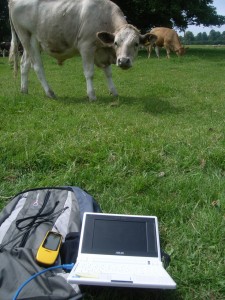
Curious cows. A hazard that distinguishes our field testing from our lab based testing.
Today we did our first set of antenna tests as part of the JISC funded Portable VoWLAN project. We went out into the wilds of Old Wolverton and set up a pair of Linksys WRT 54GL routers at a distance of 100 meters in the morning and then a distance of 1.3 kilometers in the afternoon, to compare the performance of a range of antenna.
We used the iperf program to identify the (tcp) bandwidth and (udp) jitter values from a 60 second test. Here’s a quick summary of the findings…
